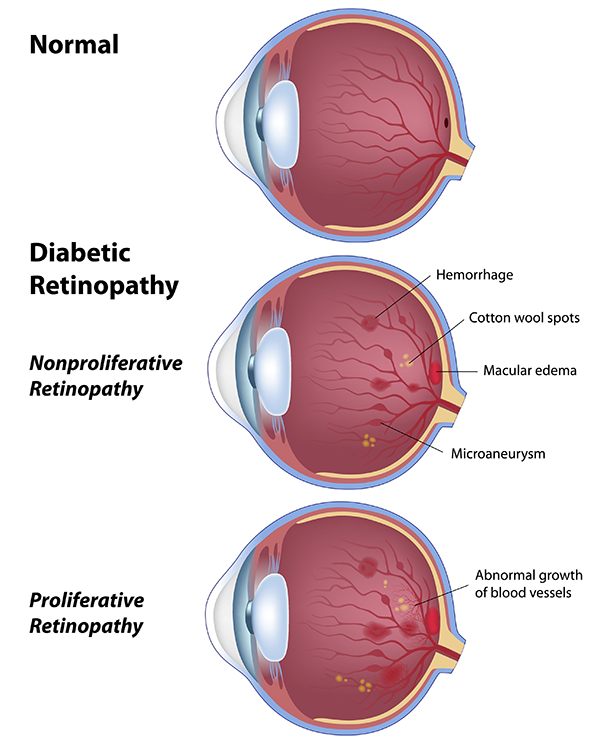Diabetes and the Eye
March 14, 2024
-
Categories:
- Eyecare,
- Diabetes,

How Does Diabetes Affect the Eyes?
Diabetes is a chronic condition that affects how your body processes sugar (glucose), leading to elevated blood sugar levels. Over time, high blood sugar levels can cause damage to various organs and tissues throughout the body, including the eyes. One of the most common eye complications associated with diabetes is diabetic retinopathy.
Understanding Diabetic Retinopathy
Diabetic retinopathy is a serious eye condition that affects the retina, the light-sensitive tissue located at the back of the eye. The retina is essential for vision, as it receives and processes visual information before transmitting it to the brain. When blood sugar levels are consistently high, the small blood vessels in the retina may become damaged, leading to a condition known as diabetic retinopathy.
Symptoms of Diabetic Retinopathy
One of the challenges of diabetic retinopathy is that it often develops without causing noticeable symptoms in its early stages. However, as the condition progresses, individuals may experience:
- Blurred or fluctuating vision: Changes in vision quality, such as blurriness or fluctuations in clarity, may occur as a result of diabetic retinopathy.
- Floaters or spots: Abnormalities in the field of vision, such as floaters (small specks or lines) or spots, may appear due to bleeding within the eye.
- Sudden vision loss: In severe cases, diabetic retinopathy can cause sudden and significant vision loss if a large hemorrhage occurs within the eye.
Diagnosis of Diabetic Retinopathy
Early detection of diabetic retinopathy is crucial for preventing vision loss and preserving eye health. A comprehensive eye examination by an optometrist or ophthalmologist is the most effective way to diagnose diabetic retinopathy. During the examination, the eye care professional will:
- Dilate the pupils to get a better view of the retina.
- Use specialized instruments, such as an ophthalmoscope, to examine the retina for signs of damage.
- Perform additional tests, such as fluorescein angiography or optical coherence tomography (OCT), to assess the extent of the retinopathy and its impact on vision.
Treatment Options for Diabetic Retinopathy
While there is currently no cure for diabetic retinopathy, several treatment options are available to manage the condition and reduce the risk of vision loss:
- Blood sugar control: Tight control of blood sugar levels through lifestyle modifications, medication, and insulin therapy can help slow the progression of diabetic retinopathy and minimize its impact on vision.
- Laser surgery: Laser therapy, also known as photocoagulation, is a common treatment for diabetic retinopathy. During this procedure, a laser is used to seal off leaking blood vessels or destroy abnormal blood vessels in the retina, reducing the risk of further damage.
- Medications: In some cases, medications such as anti-VEGF drugs or corticosteroids may be injected into the eye to reduce swelling (edema) or inhibit the growth of abnormal blood vessels.
Preventing Diabetic Retinopathy
Prevention is key when it comes to diabetic retinopathy. Individuals with diabetes can take several steps to lower their risk of developing the condition:
- Maintain strict control of blood sugar levels through diet, exercise, medication, and regular monitoring.
- Manage other risk factors, such as high blood pressure and high cholesterol, which can contribute to the progression of diabetic retinopathy.
- Attend regular eye examinations to monitor for signs of retinopathy and receive timely treatment if necessary.
Conclusion
Diabetic retinopathy is a serious complication of diabetes that can lead to vision loss if left untreated. By understanding the symptoms, diagnosis, and treatment options for diabetic retinopathy, individuals with diabetes can take proactive steps to protect their vision and maintain eye health. Early detection, regular eye examinations, and effective management of diabetes are essential for preventing vision loss and preserving quality of life.